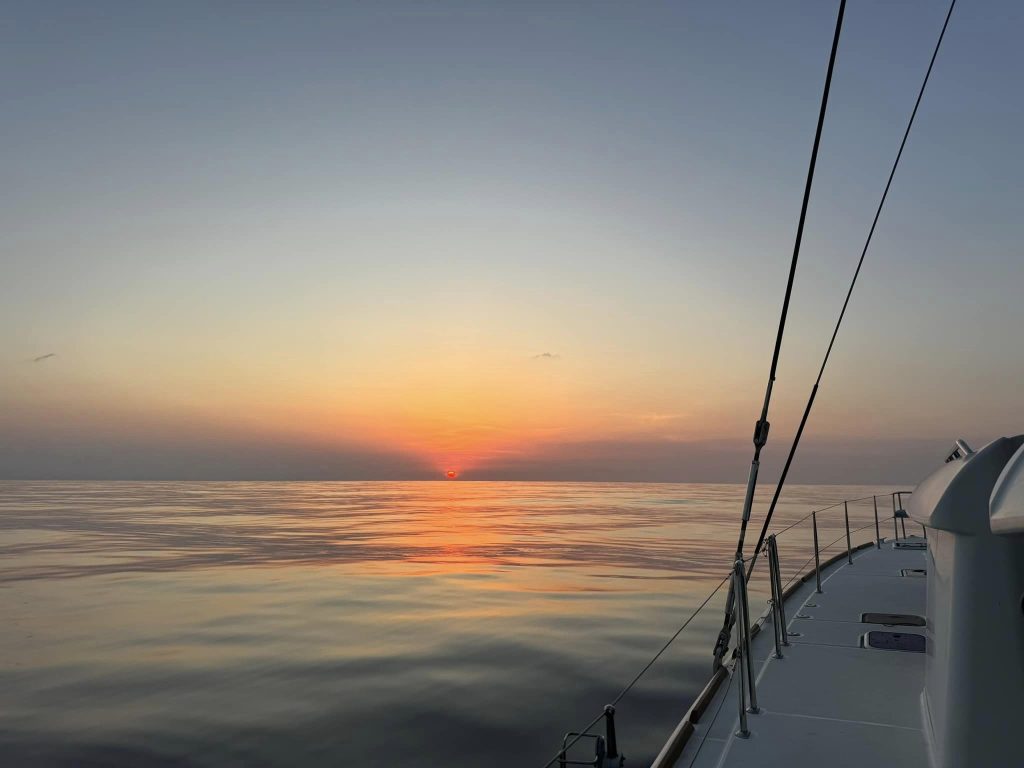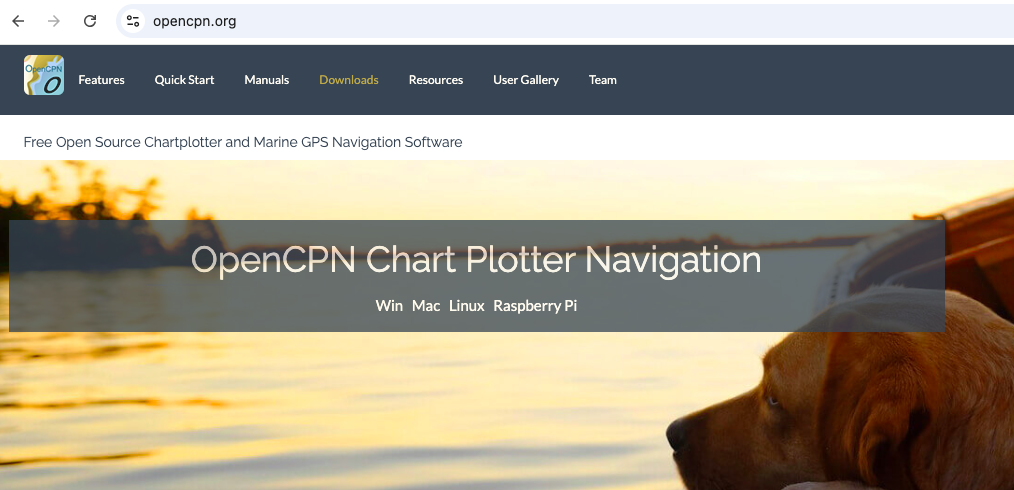Chart Plotters
The title of this section is somewhat misleading. Technically, a chart plotter is a specific type of electronic navigation device which allows a very limited number external sensors to be “plugged” into it. A chart plotter focuses primarily on displaying navigation charts with your position, speed, and course.

For simplicity, we will be lumping several different types of electronic devices into a “catch all” chart plotter category. These include multi-function displays (MDF), laptops with installed navigation software, and mobile devices.
Multi-Function Displays
A marine multifunction display (MFD) is a central control hub combining multiple marine electronic device functions into a single screen. It is the controller of a network of sensors, receivers, and devices and can typically display data from GPS, radar, navigation charts, engine monitoring, wind, weather, and more.
Laptops
There are several software packages available to turn a PC, Mac, or Linux laptop into a viable navigation tool. Options include the following and many more. Some are free to download. Others are available for a fee. Four excellent options are:
- OpenCPN
- QtVlm
- Navionics
- Rose Point Coastal Explorer
These lessons primarily explore the use of OpenCPN. an open-source software program available for most operating systems. Once installed on a computer, navigation charts may be downloaded from many sources.
Free electronic navigation charts, which we will refer to as ENCs are offered by NOAA and will be used to learn the principles of electronic navigation.
In the next lesson, we look at downloading OpenCPN and explore some of the primary options, menus, and settings.
Mobile Devices – Cell Phones and Tablets
I am constantly amazed with mobile devices. In the palm of my hand is a device with more computing power than the most powerful personal computers of forty years ago. I have personally used several navigation apps running on IPad’s and android tablets as well as cell phones.
While conducting Advanced Coastal Cruising classes, I always have a plot running on a mobile device as a backup to my students’ traditional navigation processes. On a recent round-trip pleasure sail from San Francisco to Morro Bay I was able to test a newly released OpenCPN version available for android devices and was pleased to find the look, feel, and function was very much like the laptop versions.
Chart Plotter, MFD, and Laptop Differences
You will be happy to learn that for the most part all these tools offer the same functionality when it comes to understanding the basics of electronic navigation. All display charts, find and show your latitude and longitude as well as speed, and course. Most can also overlay AIS and radar data onto the chart, and many can overlay weather maps and GRIB files.
The primary user interface differences are in how menus are accessed. Many chart plotters use buttons to open, navigate, and select menu options. Generally, only a few devices can be plugged into a chart plotter, limiting its capabilities.
MFDs oftentimes employ touch screens and may be networked with many more sensors and receivers. Menus tend to be a bit more intuitive and are easily navigated. Laptops are generally “mouse” driven.
It’s the Similarities That Are Important
Don’t worry too much about differences. If you learn how using one tool, the others are easily figured out.
OpenCPN
There are many manufacturers of chart plotting equipment. Raymarine, Garmin, Furuno, and B&G to name a few.
All perform the same functions, in essentially the same way, however, each has its own user interface. Most also require the use of proprietary charts with fees attached.
Trying to write lessons with detailed instructions on every platform you might use is impractical. That is what the users’ manuals are for. Fortunately, learning one system will provide the knowledge and skills to operate any charting device with little additional learning effort. The “why” and “how to” skills do not change.

Why OpenCPN
Because OpenCPN is available for any laptop you might have, and is open source and free to download, the decision was made to focus on it here.
<Previous Lesson Next Lesson>
Note: If you are interested, donations are accepted by OpenCPN to aid in development costs, and are made using the Donate function found at the bottom of the OpenCPN Team page.
